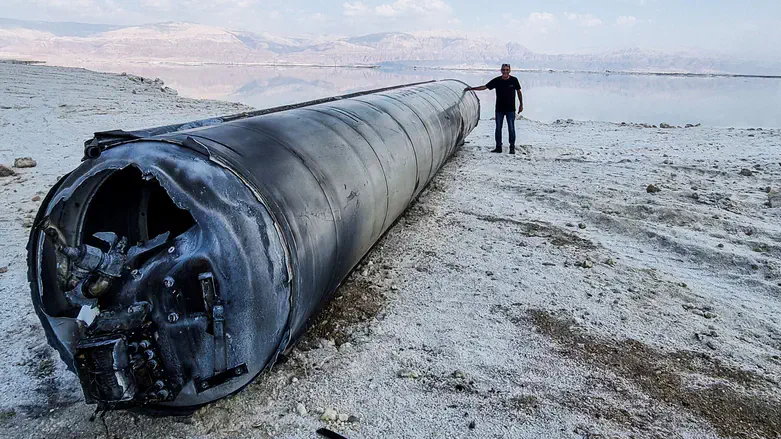
Only a fraction of the ballistic missile interceptors launched by the US military intercepted their targets during Iran's large-scale missile and drone attack on Israel on the night of April 13, journalist Amir Bar Shalom of Galai Tzahal reported today (Wednesday).
According to the report, of the eight SM-3 missiles fired by the American forces, only two reached their target. This constitutes a failure rate of 75%. The SM-3 is a ship-based surface-to-air missile used to intercept short and medium-range ballistic missiles. This was the first time SM-3s were used in combat. An American Patriot missile battery was also deployed and shot down at least one ballistic missile.
However, Bar Shalom emphasized that this was only a small part of America's contribution to the defense against Iran's attack that night, as US Air Force pilots, together with British, French, Jordanian, and Israeli forces, shot down hundreds of drones before they could reach Israel. In addition, no such issues were found in the interception of drones and cruise missiles.
Moreover, the US systems provided the widest radar image of a missile attack, which was crucial in carrying out so many successful interceptions.
"They should be thanked for what they did," Ben Shalom said of the American forces.
Iran's attack included about 170 attack drones, over 30 cruise missiles, and over 120 ballistic missiles, making it one of the largest missile and drone assaults of its kind in military history. With the help of the US, UK, France, and Jordan, Israel and its allies were able to intercept nearly all of the threats.
Of the over 320 projectiles fired, nearly all were intercepted or malfunctioned. About five ballistic missiles succeeded in reaching their targets, causing minor damage in an Israeli Air Force base in the Negev. It has not yet been disclosed if the ballistic missiles that struck the base were the ones the SM-3s missed or if those missiles were intercepted by Israel's air defense systems as they got closer to their targets.
Israel's air defense systems had an interception rate of over 90%, though this may have been lower without so many of the enemy projectiles being intercepted by the militaries of other countries before they approached Israeli airspace.
